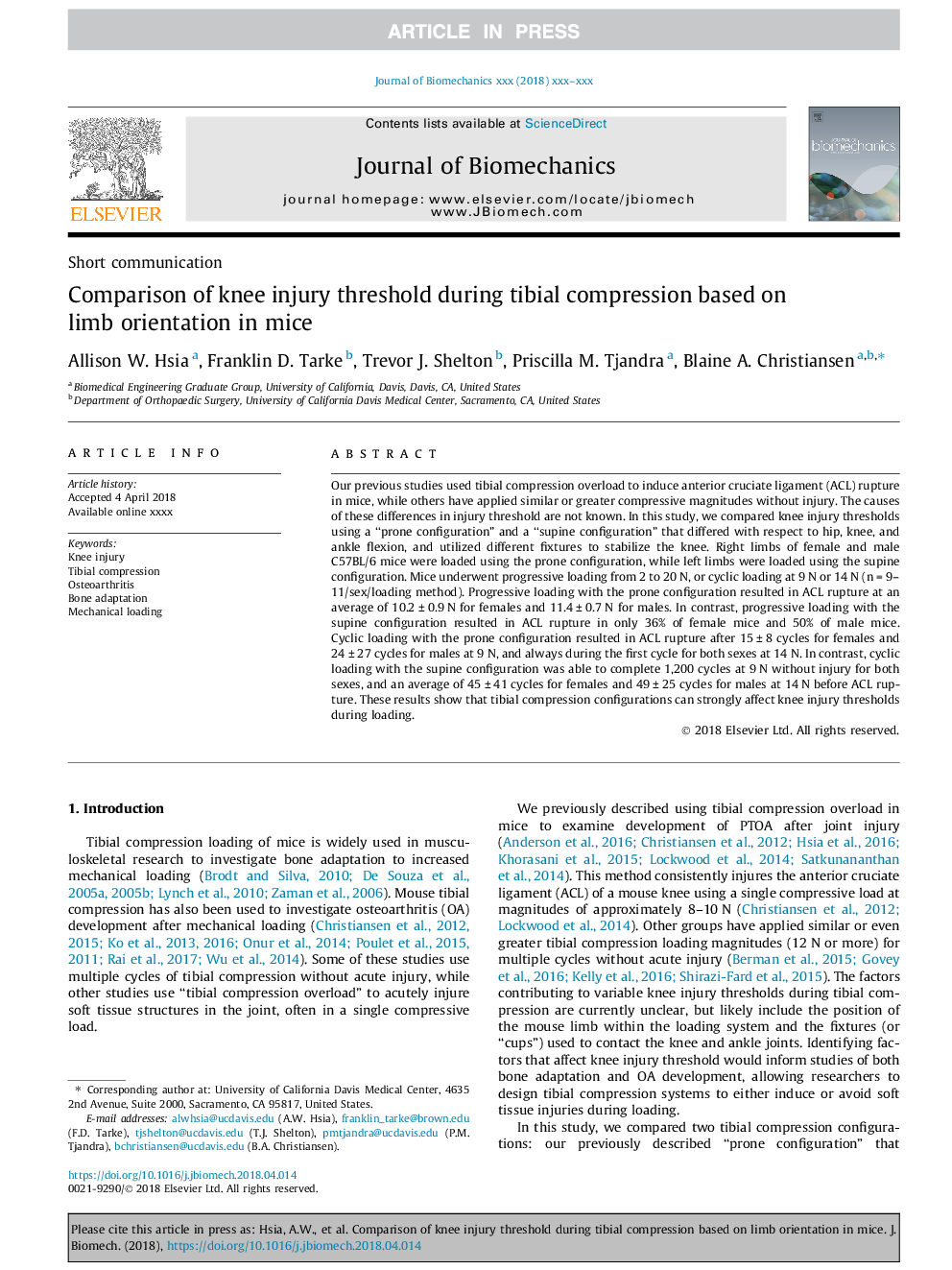| Article ID | Journal | Published Year | Pages | File Type |
|---|---|---|---|---|
| 7236056 | Journal of Biomechanics | 2018 | 5 Pages |
Abstract
Our previous studies used tibial compression overload to induce anterior cruciate ligament (ACL) rupture in mice, while others have applied similar or greater compressive magnitudes without injury. The causes of these differences in injury threshold are not known. In this study, we compared knee injury thresholds using a “prone configuration” and a “supine configuration” that differed with respect to hip, knee, and ankle flexion, and utilized different fixtures to stabilize the knee. Right limbs of female and male C57BL/6 mice were loaded using the prone configuration, while left limbs were loaded using the supine configuration. Mice underwent progressive loading from 2 to 20â¯N, or cyclic loading at 9â¯N or 14â¯N (nâ¯=â¯9-11/sex/loading method). Progressive loading with the prone configuration resulted in ACL rupture at an average of 10.2â¯Â±â¯0.9â¯N for females and 11.4â¯Â±â¯0.7â¯N for males. In contrast, progressive loading with the supine configuration resulted in ACL rupture in only 36% of female mice and 50% of male mice. Cyclic loading with the prone configuration resulted in ACL rupture after 15â¯Â±â¯8 cycles for females and 24â¯Â±â¯27 cycles for males at 9â¯N, and always during the first cycle for both sexes at 14â¯N. In contrast, cyclic loading with the supine configuration was able to complete 1,200 cycles at 9â¯N without injury for both sexes, and an average of 45â¯Â±â¯41 cycles for females and 49â¯Â±â¯25 cycles for males at 14â¯N before ACL rupture. These results show that tibial compression configurations can strongly affect knee injury thresholds during loading.
Related Topics
Physical Sciences and Engineering
Engineering
Biomedical Engineering
Authors
Allison W. Hsia, Franklin D. Tarke, Trevor J. Shelton, Priscilla M. Tjandra, Blaine A. Christiansen,
